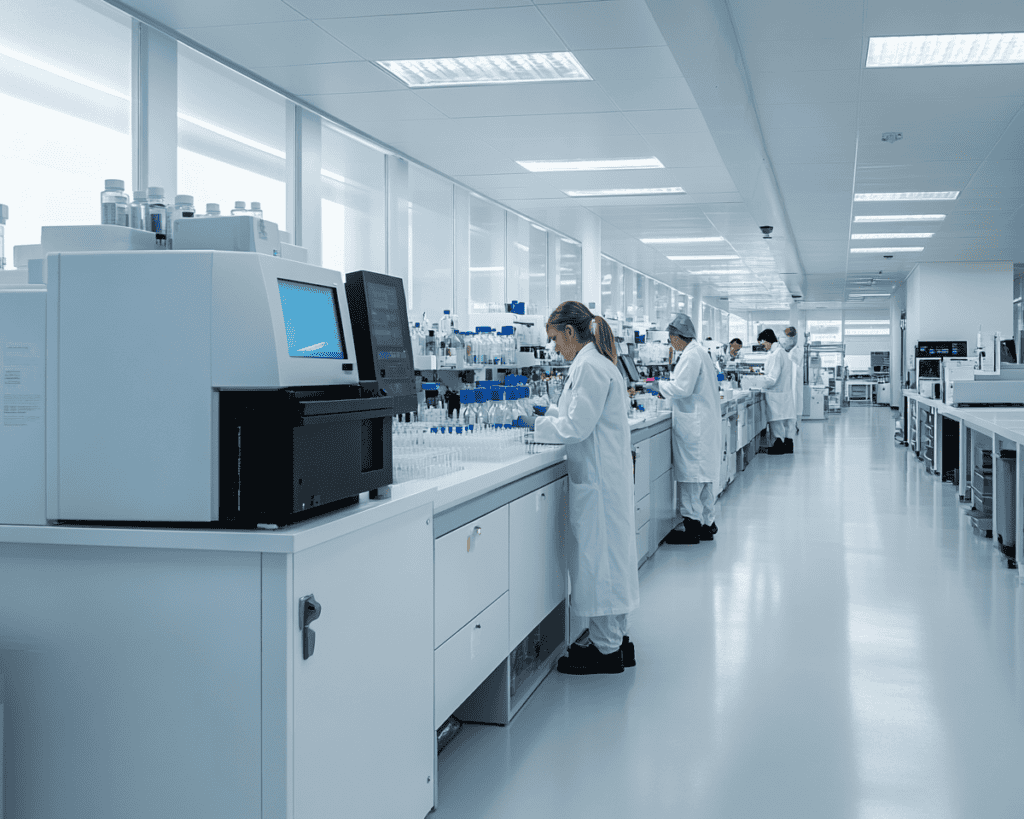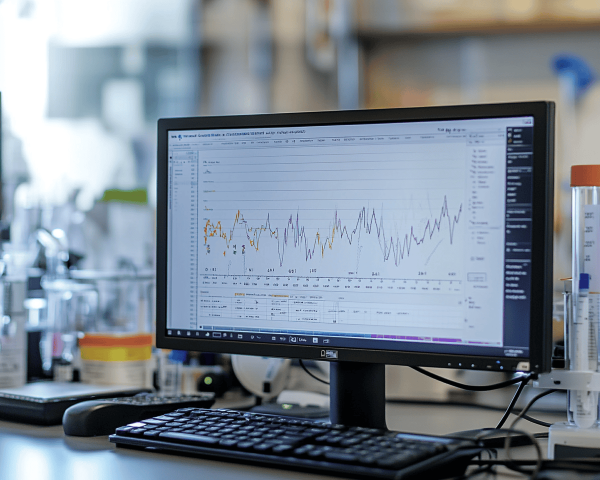If you’ve ever dabbled in chromatography, you’ve probably heard the term “mobile phase” thrown around. But, what exactly does it mean? Well, let’s break it down in a way that’s easy to understand—and maybe even fun!
The mobile phase is a key component of chromatography, playing a critical role in the separation process. Simply put, it’s the phase that carries the sample through the stationary phase. Imagine it like the river that moves through a canyon, pushing the rocks along its path, but instead of rocks, the mobile phase moves molecules through a column.
Do you ever wonder what makes the mobile phase so essential in chromatography? Well, without it, there wouldn’t be any separation of compounds at all. But more on that later—let’s dive deeper into its role.
What Exactly Is the Mobile Phase?
In simple terms, the mobile phase is the phase that moves through the chromatography system and carries the sample along. Imagine a conveyor belt – the mobile phase is like the moving part, while the stationary phase stays put. Depending on the type of chromatography, the mobile phase can either be a liquid (in liquid chromatography, LC) or a gas (in gas chromatography, GC).
But, you might wonder, why does this matter? Well, the mobile phase is responsible for transporting the sample through the stationary phase, where the actual separation of components happens. This process is essential because it allows the various components of the sample to interact differently with the stationary phase, leading to separation.
Types of Mobile Phases
The mobile phase can be a single solvent or a mixture of solvents. Solvents like water, methanol, acetonitrile, and hexane are commonly used in liquid chromatography. For gas chromatography, gases such as helium or nitrogen are used as the mobile phase.
The choice of solvent is vital. The right solvent will help dissolve the sample effectively and carry it through the system at a controlled speed. But the wrong solvent can lead to poor separation or even no separation at all! So, what’s the ultimate goal here? You want a solvent that interacts with your sample just right, ensuring that the components get separated into identifiable groups.
How Does the Mobile Phase Work?
Think of chromatography as a race. The mobile phase is like the track, guiding the different components of the sample through it. But not all components travel at the same speed. Some are more attracted to the stationary phase, which slows them down, while others move faster because they don’t interact as strongly. It’s this difference in movement that results in separation.
Now, you might ask, “What determines the speed at which components move through the stationary phase?” That’s where things get interesting. Several factors come into play, such as the flow rate of the mobile phase, its viscosity, and even its pH level. By tweaking these variables, you can optimize how well the components separate.
Why Does the Choice of Mobile Phase Matter?
The composition and flow of the mobile phase directly impact the efficiency of the separation. For example, if you are working with a sample that contains both hydrophobic (water-repelling) and hydrophilic (water-attracting) substances, you need to choose a solvent that interacts with these components in a way that ensures they will separate effectively. You can adjust the polarity or even the temperature of the mobile phase to make sure your sample components are properly separated.

The Importance of Mobile Phase in Various Types of Chromatography
- Liquid Chromatography (LC): In LC, the mobile phase is typically a liquid solvent or a mix of solvents. The liquid phase dissolves the sample and carries it through the stationary phase packed into a column. The separation occurs because different compounds interact with the stationary phase in different ways, causing them to elute at different rates.
- Gas Chromatography (GC): Here, the mobile phase is a gas, usually helium or nitrogen. In GC, the sample is vaporized and carried by the gas through a column. The differences in how the components interact with the stationary phase result in separation.
- Supercritical Fluid Chromatography (SFC): In this technique, the mobile phase is a supercritical fluid, which is somewhere between a gas and a liquid. Supercritical fluids like carbon dioxide are often used for their unique properties, helping to separate compounds with low volatility.
Factors That Affect the Mobile Phase
So, you might be asking, “What should I consider when selecting a mobile phase?” Here are a few key factors:
- Polarity: The polarity of the mobile phase affects how compounds in the sample will interact with the stationary phase. If you’re trying to separate polar compounds, you’ll want a more polar mobile phase.
- Viscosity: The viscosity of the solvent determines how fast the mobile phase can move through the system. High viscosity means the solvent will flow slower, while low viscosity leads to faster movement.
- Flow Rate: This can significantly impact the separation process. A fast flow rate may reduce the analysis time, but it can also decrease the separation resolution. On the other hand, a slow flow rate allows for better resolution but takes more time.
Solvents Commonly Used for Mobile Phases
The selection of solvent is an art in itself. Some solvents work better with specific materials, and the right choice can make a huge difference in the success of the separation. Common solvents used for liquid chromatography include:
- Methanol: Highly polar, often used for polar sample components.
- Acetonitrile: A polar solvent that is commonly used for separation in high-performance liquid chromatography (HPLC).
- Hexane: Non-polar, often used for separating non-polar compounds.
In gas chromatography, helium and nitrogen are the most commonly used gases for the mobile phase, given their inert nature, which doesn’t interfere with the sample or stationary phase.

Does the Mobile Phase Affect the Efficiency?
Absolutely! The interaction between the mobile phase and stationary phase plays a huge role in determining how effectively your sample components will be separated. If the mobile phase flows too quickly, the separation may be incomplete. On the other hand, if the flow is too slow, it might take forever to get your results.
When it comes to chromatography, there is no one-size-fits-all. The ideal mobile phase depends on the sample you’re working with and the type of chromatography you’re using. Fine-tuning the mobile phase is often a balancing act between speed, efficiency, and the resolution of your results.
Conclusion: What’s Your Take?
In summary, the mobile phase is a crucial component in the chromatography process. Whether it’s a liquid or gas, its primary role is to carry the sample through the system, interacting with the stationary phase to achieve separation of the components. The choice of mobile phase depends on the properties of the sample being analyzed and the chromatography technique being used. Factors such as polarity, viscosity, flow rate, temperature, and pH all influence the efficiency of the separation.
By carefully selecting and controlling the mobile phase, you can improve the accuracy and resolution of the separation process. For example, in liquid chromatography, the right solvent mixture can ensure optimal interactions with the sample, leading to better results. Similarly, in gas chromatography, inert gases like helium allow for the efficient transport of vaporized samples.
Ultimately, the mobile phase is not just the “moving part” in chromatography but a key player that dictates how well the separation occurs. Understanding its role and how to optimize it will help you achieve more precise and reliable results in any chromatographic analysis. So, do you feel more confident in choosing the right mobile phase for your experiments now?
Do you think choosing the mobile phase is the most important step in chromatography, or do you think the stationary phase has more influence? The balance between the two is key, but your insights are welcome. I’d love to hear what you think!











